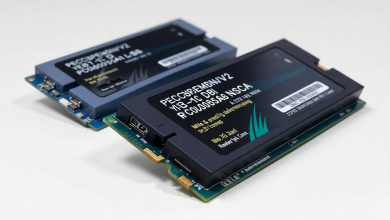The Evolution and Impact of Face Swap Videos

In recent years, face swap videos have surged in popularity, captivating audiences with their amusing and sometimes astonishing content. Leveraging advancements in artificial intelligence and deep learning, these videos allow users to swap faces with celebrities, friends, or even fictional characters, creating a new realm of digital interaction and entertainment.
What Are Face Swap Videos?
Face swap videos are digital creations where one person’s face is superimposed onto another’s body in a video clip. This technology analyzes facial structures and expressions to seamlessly integrate the swapped face, maintaining natural movements and emotions. The result is a convincing portrayal that can blur the lines between reality and digital fabrication.
The Technology Behind Face Swapping
At the core of face swap videos is deep learning, a subset of machine learning that uses neural networks with multiple layers (hence “deep”) to analyze data. Specifically, techniques like Generative Adversarial Networks (GANs) and autoencoders are employed:
- Generative Adversarial Networks (GANs): Consist of two neural networks, a generator and a discriminator, that work together to produce increasingly realistic images.
- Autoencoders: These neural networks learn to compress data and then reconstruct it, capturing essential features needed for face swapping.
These technologies require extensive datasets of facial images to train the models, enabling them to understand and replicate facial features and expressions accurately.
Applications and Popularity
Face swap technology has found applications in various fields:
- Entertainment: Apps like Snapchat and Instagram offer face swap filters for fun and engaging user experiences.
- Film and Media: Used in movies for special effects, such as de-aging actors or creating realistic stunt doubles.
- Education and Training: Helps in creating realistic simulations for training in fields like medicine and aviation.
The ease of access to face swap apps has made it a popular trend on social media platforms, with users sharing humorous and creative content that often goes viral.
Ethical Considerations
While the technology offers exciting possibilities, it also raises ethical concerns:
- Privacy Issues: Unauthorized use of someone’s likeness can infringe on personal privacy and rights.
- Misinformation: Realistic face swaps can be used to create deepfakes—videos that falsely depict individuals saying or doing things they never did, potentially spreading false information.
- Consent: It’s crucial to obtain consent from individuals whose faces are used in swapped content to respect their autonomy and legal rights.
Regulatory Measures and Best Practices
Governments and organizations are increasingly recognizing the need to regulate the use of face swap technology:
- Legislation: Some regions have enacted laws prohibiting the malicious use of deepfakes, especially in political contexts.
- Platform Policies: Social media platforms are implementing policies to detect and remove deceptive deepfake content.
- User Responsibility: Creators and users are encouraged to use the technology ethically, respecting privacy and consent.
The Future of Face Swap Technology
As technology continues to advance, face swap videos will become more sophisticated and accessible. Potential developments include:
- Improved Realism: Enhanced algorithms may produce even more convincing swaps.
- Real-Time Swapping: Possibility of live face swapping during video calls or broadcasts.
- Cross-Cultural Applications: Bridging language barriers by swapping faces in educational or collaborative content.
Conclusion
Face swap video represents a fascinating intersection of technology and creativity, offering new avenues for expression and innovation. However, it’s imperative to approach this technology with ethical mindfulness, ensuring respect for individual rights and contributing positively to the digital landscape.
Disclaimer: This article aims to provide an informative overview of face swap videos and does not endorse or encourage any unethical use of the technology.


